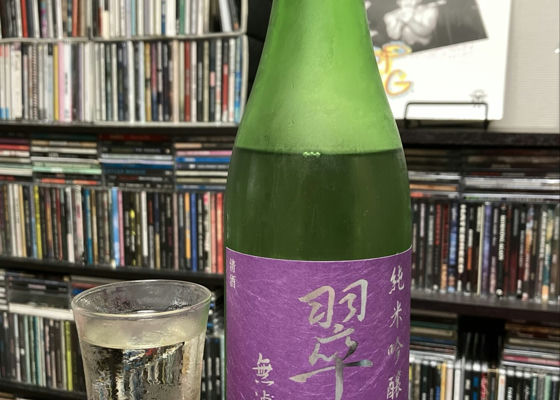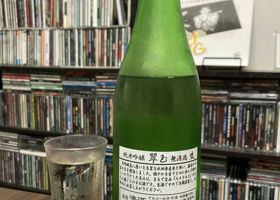


FSB
Ryoseki Shuzo's sake is available only to exclusive dealers.
When poured, it is slightly colored. Since it was bottled in January, it is difficult to determine if this is original or an effect of aging. No carbonation.
The aroma is very fragrant, with a sweetness and acidity reminiscent of strawberries. Is the ginjo aroma stronger than that of Hanayu?
When you drink it, you are hit with a solid sweetness and the umami of rice. Sweet and delicious. However, a hint of alcohol passes through at the end, balancing out the heaviness.
Although colored, the sake itself is clear and very smooth in texture and mouthfeel.
Overall, it gives the impression of a refined version of Hanayuup, with a more floral and refreshing feel, like Daigin.
But it has color and a strong flavor, so I thought it might taste better if it were heated up...?
So, we did the contraindication of heating the sake ourselves.
I heard that heating up sake can give it a characteristic fishy smell, so I warmed it up to 45℃.
The sake had a soft aroma of sourness from the alcohol, with a hint of rice in the background.
As one would expect from a classic sake, the flavor does not develop, but one can still taste the umami of the rice and a sense of being soft and fluffy.
It's not a good match, but it's not bad. It's not a good match, but it's not bad either.
Maybe there are some good sake brews out there that are good even when heated.
It's interesting to question common sense once in a while.
Japanese>English
ma-ki-
Hello, FSB!
Suitama Jungin Nama Sake is delicious 😋.
I was addicted to purple suidama a long time ago when a friend gave it to me 😁✨✨.
I've never tried heated sake but it's good to try different kinds 🤗
Japanese>English
FSB
Hi, ma-ki-!
Thank you for your comment!
Purple Suidama was one of your favorites, ma-ki!
This sweetness and flavor is certainly addicting 👍.
But it is best served cold! LOL!
Japanese>English